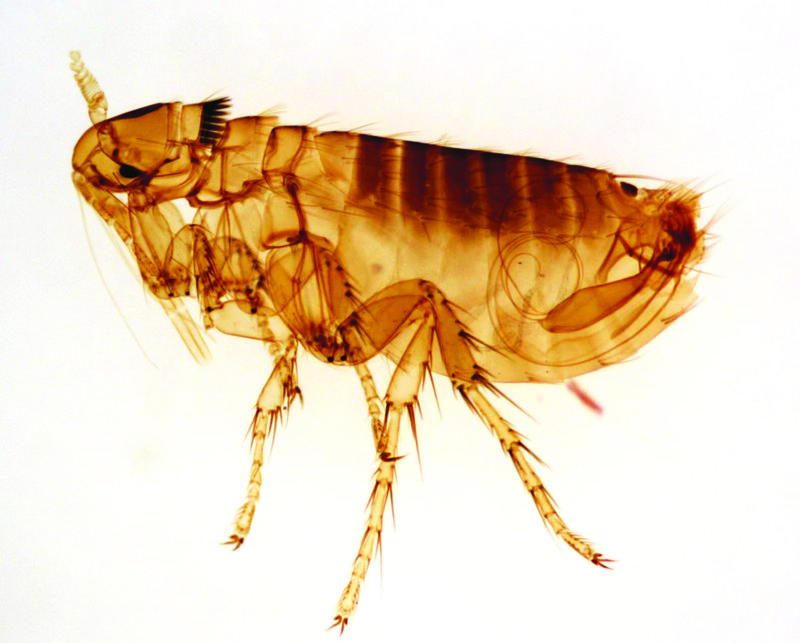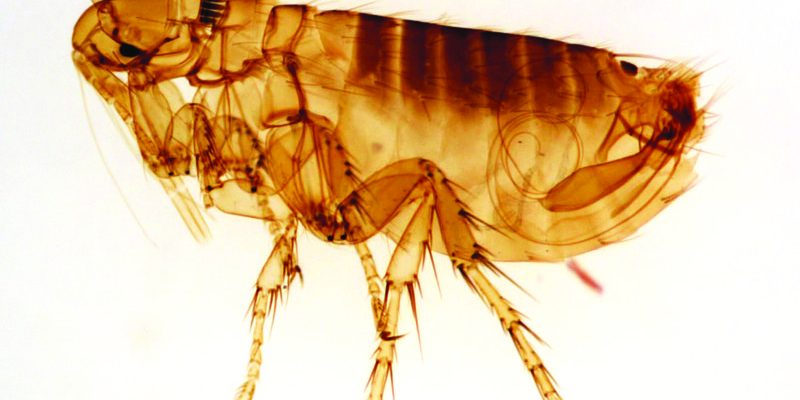
You might picture fleas only in relation to pets, but the truth is they have a broader habitat range, and they can surprise you with their clever adaptability. Imagine wandering into a garden and finding a flea that’s just as comfortable there as it is in your pet’s fur. As we uncover the secrets of these creatures, you might just find yourself appreciating their resilience, even if they aren’t your favorite topic.
Understanding Flea Habitats
Fleas are highly adaptable, which is part of what makes them such successful parasites. Typically, you’ll find them in environments where they can easily access a host, like your pets or even humans. Fleas thrive in warm, humid conditions, often flourishing in areas with plenty of organic material, such as:
- Carpets
- Pet bedding
- Grass and soil
- Clothing
Fleas prefer these spots because they provide not just warmth but also a steady food supply. The moisture helps them develop from eggs to larvae to pupae, which is crucial for their life cycle. So, if you’ve ever wondered why fleas seem to pop up everywhere in your house, it’s because they can find the perfect setting to thrive right under your nose!
The Life Cycle of a Flea
Fleas go through several stages in their life cycle: egg, larva, pupa, and adult. Each phase has its own habitat preferences.
1. Eggs: Flea eggs are tiny and often fall off the host into the environment. They can land on carpets, bedding, or even soil.
2. Larvae: Once they hatch, flea larvae tend to stay hidden in dark places, feeding on organic debris like skin flakes and flea dirt. They love cozy nooks where they won’t be disturbed.
3. Pupae: The pupal stage is where fleas become a little more tricky. In this stage, they can remain dormant for several months, waiting for the right conditions to emerge as adults. They can sense vibrations and heat, which help them know when a potential host is nearby.
4. Adults: After emerging from their cocoons, fleas are ready to jump onto a host and start feeding. They can leap up to 200 times their body length!
This life cycle is fascinating because it allows fleas to adapt to their surroundings. If conditions aren’t right for one stage, they can wait it out until they are.
How Fleas Adapt to Their Environment
Fleas are masters of adaptation. They can thrive in various environments, but how do they do it? Here are some key adaptations:
– Camouflage: Fleas are small and often brown, allowing them to blend into their surroundings. This makes it harder for you and your pets to spot them.
– Jumping Ability: A flea’s legs are built for jumping, allowing them to move quickly from host to host. This ability to leap great distances helps them find food and escape threats.
– Quick Reproduction: Fleas can reproduce quickly, meaning that even if you think you’ve gotten rid of them, a few can lead to an infestation in no time.
Honestly, if you think about it, these adaptations are like having a set of tools that help them survive in the wild and in human environments alike.
The Role of Temperature and Humidity
Temperature and humidity play significant roles in flea survival. Fleas typically prefer temperatures between 65°F and 80°F (18°C to 27°C). In these conditions, their life cycle speeds up.
When it’s too cold or too hot, they can go dormant. This is why you might notice fleas becoming more of a nuisance during warm months. Similarly, humidity levels above 50% are ideal for flea development.
If the air is too dry, flea eggs may not hatch. This means controlling your home’s temperature and humidity can effectively manage flea populations.
Fleas in the Wild vs. Household Fleas
Fleas can live in the wild just as easily as they can within a home. Wild fleas, like the cat flea or dog flea, typically inhabit the fur of their hosts in natural settings. However, household fleas are often more adapted to living closely with humans and pets.
In nature, they may live in grass or forested areas, always close to potential hosts. They use debris and grass for shelter, much like you’d find in a pet’s bedding. Household fleas, on the other hand, are often found in carpets and upholstery where they can remain undetected until they leap out for a meal.
The difference lies in the environments they occupy. Both types exhibit similar adaptations, but household fleas might be more resilient to people’s attempts to remove them due to their proximity to food sources.
Common Problems with Flea Infestations
If you’ve ever dealt with a flea infestation, you know it can be a real headache. Fleas can reproduce quickly, and before you know it, you may have dozens hopping around.
Some common problems include:
– Skin Irritations: Flea bites can cause red, itchy spots on your pets and even on humans. Some people have allergic reactions that lead to more severe skin issues.
– Flea Allergies: Pets can develop flea allergy dermatitis, where they become allergic to flea saliva. This makes them incredibly uncomfortable, leading to excessive scratching and hair loss.
– Transmission of Disease: Fleas can carry diseases and parasites, such as tapeworms. This can impact both pets and humans, leading to further health issues.
As you can see, flea control is more than just a pest problem; it’s about ensuring the health and comfort of everyone in your home.
Tips to Manage Fleas Effectively
Managing fleas requires a multi-faceted approach. Here are some practical tips to keep infestations at bay:
1. Regular Grooming: Brush your pets regularly to catch fleas early. Use a flea comb to make it easier.
2. Vacuum Frequently: Keep your home clean by vacuuming carpets, upholstery, and pet bedding. This helps eliminate eggs and larvae.
3. Wash Bedding: Wash pet bedding weekly in hot water to kill any eggs or fleas hiding there.
4. Consider Treatments: Use veterinarian-recommended flea treatments for your pets. There are various options available, from topical treatments to oral medications.
5. Seal Cracks and Crevices: Make sure to seal gaps in windows and doors to prevent fleas from entering your home.
Taking these steps can significantly reduce the chances of fleas making themselves at home with you.
In conclusion, fleas are remarkable little pests with unique adaptations that help them survive in various environments. By understanding where they live and how they adapt, you can better tackle these pesky critters if they ever find their way into your home. Remember, staying ahead of the game with prevention methods will keep both you and your pets safe from flea troubles!

